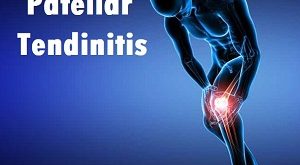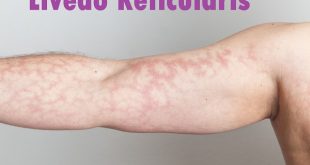Definition
Polyarteritis Nodosa (PAN) is a rare disease that results from blood vessel inflammation (“vasculitis”) causing injury to organ systems. The area’s most commonly affected by PAN include the nerves, intestinal tract, heart, and joints. PAN can also affect the blood vessels to the kidney resulting in high blood pressure and damage to kidney function. Polyarteritis nodosa most often develops during middle age, usually when people are in their 50s, but it can occur at any age. It is rare.
The cause of polyarteritis nodosa is unknown, but it sometimes appears to be triggered by certain viral infections (such as hepatitis B or in rare cases hepatitis C) or drugs. About 20% of people with polyarteritis nodosa have hepatitis B or C. Drugs may cause the disorder, but most often no trigger can be identified. The kidneys, skin, nerves, joints, muscles, and digestive tract are most commonly affected. The liver and heart are often affected as well.
Epidemiology
- PAN is becoming a rare disease. The reduction in the incidence of PAN may be related to the decrease in HBV infection achieved by widespread vaccination. Moreover, other systemic necrotizing vasculitides (i.e. ANCA e associated vasculitis, cryoglobulinemic vasculitis) are recognized as distinct entities due to increased awareness and improved diagnostic techniques.
- In the past, systemic necrotizing vasculitis was generally considered as PAN or related variants.
- The annual incidence of PAN currently ranges from 0 to 1.6 cases/million inhabitants in European countries and its prevalence is about 31 cases/million. PAN affects patients of any gender, age, or ethnic background.
- The peak incidence occurs in the 5the6th decades of life. Before vaccination against HBV was available, more than one-third of adults with PAN were infected by HBV. Currently, less than 5% of patients with PAN are HBV-infected in developed countries.
Polyarteritis Nodosa risk factors
While the exact cause of PAN is unknown, there are many factors that can increase your risk of developing the disease. PAN is more common in people who:
- Are 40 or older
- Are male
- Have an active hepatitis B or C infection
It’s important to understand these risk factors and talk to your doctor about receiving regular tests. This is especially true if you experience symptoms of PAN or if the condition runs in your family.
Causes of Polyarteritis Nodosa
- The cause of PAN is unknown. PAN is not a form of cancer, it is not contagious, and it does not usually occur within families.
- Evidence from research laboratories strongly supports that the immune system plays a critical role in PAN, causing blood vessel and tissue inflammation and damage.
- PAN is highly associated with hepatitis B infection. Since the hepatitis B vaccine was established, the rates of PAN have decreased significantly.
Polyarteritis Nodosa symptoms
Polyarteritis nodosa mimics many diseases. It may be similar to hypersensitivity angiitis, Churg-Strauss syndrome, Cogan’s syndrome, Kawasaki’s disease and complications associated with methamphetamine addiction, hepatitis B and C infections and other liver conditions.
The symptoms can vary widely. The disease may be acute with a fever and on-going for a long time; milder but fatal within several months; or appear as a chronic, debilitating disease.
Specific symptoms vary depending on where the affected areas of the arteries are, how severe they are, how much of the blood circulation they affect and what the impact is on various organs.
The most common symptoms are:
- Blood in the urine
- Fever
- High blood pressure
- High levels of protein in the urine
- Numbness, tingling or weakness of the hands and feet
- Pain in the joints, especially the large ones
- Skin rash with raised reddish-purple patches and knobs that can be felt along affected arteries
- Stomach pain sometimes with nausea, vomiting and bloody diarrhea
- Swelling
- Weakness
- Weight loss
The vessels of the kidneys, liver, heart, stomach, and intestines are most often affected.
Skin rash with raised reddish-purple patches
Polyarteritis Nodosa complications
Complications may include:
- Heart attack
- Intestinal necrosis and perforation
- Kidney failure
- Stroke
Diagnosis and test
PAN is a complicated disease that requires multiple tests before your doctor can make a proper diagnosis. Your doctor will likely order a complete blood count to measure the number of red and white blood cells you have.
You may also undergo:
- A tissue biopsy, which involves taking a small sample of an affected artery for laboratory examination
- An arteriogram, which is an X-ray of the arteries
- An erythrocyte sedimentation rate (ESR) test to measure inflammation
Most people with PAN have elevated ESR results. According to Johns Hopkins, skin and muscle or nerve biopsies can be helpful when making a diagnosis.
Once these tests are complete, your doctor will formulate a diagnosis and treatment plan.
In some cases, doctors may mistake abdominal pain and gastrointestinal side effects for inflammatory bowel disease. For this reason, it’s important to report any long-term gastrointestinal effects to your doctor right away.
Treatment and medications
Treatment goals
- Suppress inflammation to prevent complications
Generally about the treatment
- The treatment strategy will depend on the prevalence and severity of the disease, as well as the reversibility of the disease manifestations.
- Inactive phases are given prednisolone, Possibly combined with other immunosuppressive therapy
- The treatment is otherwise symptomatic dependent on organ manifestations (hypertension, heart failure, complicating bacterial infections)
Drug treatment
- Prednisolone in high doses (initially 1mg/kg prednisolone dgl or more) can control fever and constitutional symptoms and assist in the healing of vascular lesions
- In severe organ complications, additional immunosuppression is given, primarily cyclophosphamide
- The optimal duration of the immunosuppressive treatment has not been determined, but one year of treatment is a minimum
Prevention of Polyarteritis Nodosa
Polyarteritis nodosa (PAN) is a rare disease that results from blood vessel inflammation (“vasculitis”) causing injury to organ systems. The areas most commonly affected by PAN include the nerves, intestinal tract, heart, and joints. PAN can also affect the blood vessels to the kidney resulting in high blood pressure and damage to kidney function.
 Diseases Treatments Dictionary This is complete solution to read all diseases treatments Which covers Prevention, Causes, Symptoms, Medical Terms, Drugs, Prescription, Natural Remedies with cures and Treatments. Most of the common diseases were listed in names, split with categories.
Diseases Treatments Dictionary This is complete solution to read all diseases treatments Which covers Prevention, Causes, Symptoms, Medical Terms, Drugs, Prescription, Natural Remedies with cures and Treatments. Most of the common diseases were listed in names, split with categories.







